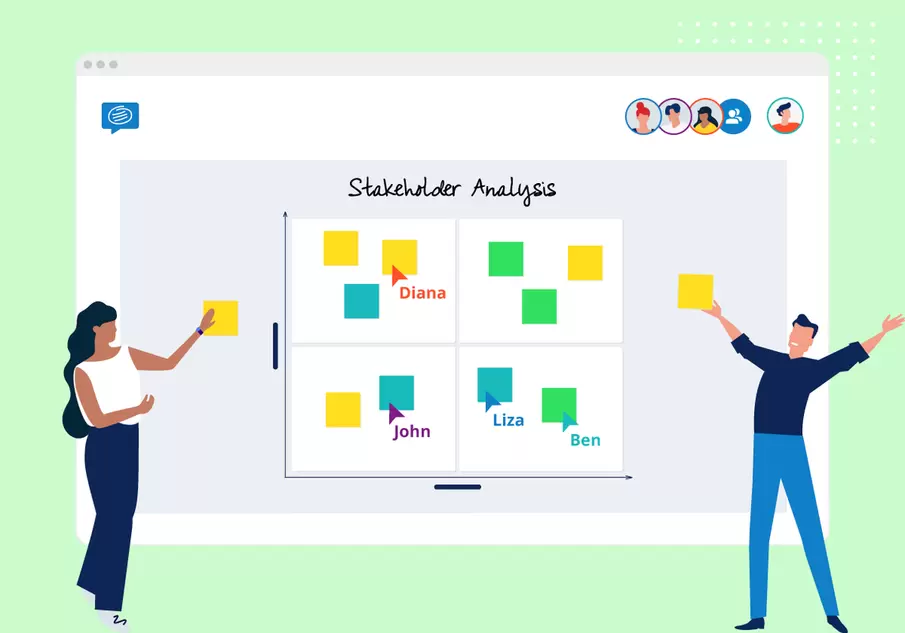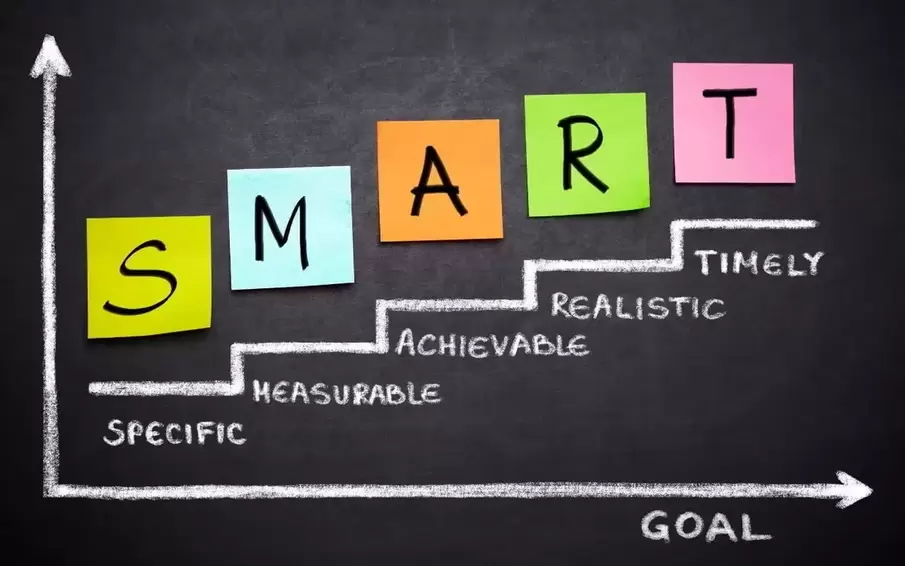Effective stakeholder collaboration can make or break an Agile project. As the conduit between the development team and key stakeholders, Agile Business Analysts play a crucial role in fostering collaboration to drive project success. But why is stakeholder collaboration so critical in Agile environments? And how can Business Analysts excel in this important skill? In this comprehensive guide, we’ll explore the significance of stakeholder collaboration for Agile Business Analysts and provide actionable strategies to build trusted partnerships with stakeholders.
Understanding Stakeholder Collaboration in Agile
Agile methodologies thrive on close collaboration, iterative development, and gathering rapid feedback. This collaborative approach extends beyond the development team to include key stakeholders like project sponsors, product owners, and end-users.
Stakeholder collaboration in Agile involves engaging these stakeholders throughout the project lifecycle to align priorities, elicit requirements, get timely feedback, and ensure the product delivers maximum value. The goal is to foster trusted partnerships between the Agile team and stakeholders to meet objectives.
This collaborative Agile ethos contrasts with traditional waterfall development where stakeholders are involved only at certain project stages like requirements gathering or user acceptance testing. Agile teams recognize that meaningful stakeholder collaboration is integral to delivering a successful product.
For Agile Business Analysts, excelling in stakeholder collaboration is a fundamental skill. It enables them to bridge the development team and stakeholders seamlessly so that expectations are set correctly and everyone works towards a shared vision. Let’s explore this crucial role.
Building Strong Relationships with Stakeholders

The foundation of effective stakeholder collaboration is building strong working relationships. Agile Business Analysts need to foster trust and rapport with both internal stakeholders like product owners and external ones like customers or vendors.
Here are some proven techniques to build constructive relationships with stakeholders:
- Schedule regular meetings to open communication channels and provide status updates proactively. Consistent interactions build comfort and familiarity.
- Actively listen to understand stakeholder concerns, challenges, and hidden needs. Reflect on their viewpoints during discussions to validate understanding.
- Show empathy by putting yourself in their shoes. Building an emotional connection makes stakeholders more willing collaborators.
- Discuss goals transparently so everyone is aligned on project objectives and timelines right from the start.
- Understand the motivations of different stakeholders to determine what success means for them. Appeal to their goals to gain buy-in.
- Manage expectations through ongoing dialogue. Ensure stakeholders have realistic expectations to avoid disappointment.
- Involve stakeholders early and often. Don’t just meet at the start and end. Regular touchpoints ensure stakeholders feel valued.
- Celebrate collective wins to foster a “we’re in it together” mindset. Shared victories build stronger partnerships.
Using these tactics to nurture trusting relationships with stakeholders provides a solid foundation for collaboration. But communication is the glue that sustains these partnerships.
Effective Communication Strategies for Stakeholder Collaboration
The best stakeholder relationships will flounder without skilful communication. For Agile Business Analysts, mastering communication is an indispensable competency when collaborating with stakeholders.
Here are some proven communication strategies for working with stakeholders:
Match Communication Style
Tune your communication style to align with individual stakeholder preferences. Some may prefer emails while others like informal chats. Observe their style and match it. Flex your own modes of communication to improve dialogue.
Actively Listen
Don’t just hear stakeholders; truly listen to understand their viewpoints. Using active listening techniques like restating, asking open-ended questions, and avoiding interruptions demonstrates you value their perspective.
Tailor Language
Avoid using complex technical jargon when communicating with non-technical stakeholders. Adapt your language and complexity level to match their understanding. Use relatable analogies and examples to convey technical concepts simply.
Discuss Benefits
Don’t just present features. Highlight benefits that matter to stakeholders to gain buy-in. Link capabilities with tangible outcomes to showcase value.
Be Transparent
Provide early insights into limitations, risks, or challenges that may impact stakeholder goals. Honesty and transparency upfront fosters trust and shared problem-solving.
Give Them a Voice
Facilitate workshops and open discussions where stakeholders can voice their thoughts directly to the team. This makes them feel valued and improves shared understanding.
Use Visuals
Leverage diagrams, journeys, wireframes, and mockups to communicate complex concepts visually. Visuals supplement detailed documentation.
Follow-up
After meetings, follow up with minutes, action items, and next steps. Confirm mutual understanding and reiterate commitments to keep stakeholders looped in.
Equipping your communication toolbox with these tactics will enable you to collaborate seamlessly with both technical and non-technical stakeholders. But driving alignment is still key.
Aligning Stakeholder Expectations with Project Goals

A core responsibility of Agile Business Analysts is aligning stakeholder expectations with overall project goals. Mismatched expectations are a common cause of stakeholder friction.
Bridging this alignment gap involves:
- Uncovering hidden assumptions during requirements workshops so they can be validated early.
- Setting measurable objectives so desired outcomes are explicitly defined for all parties. Use SMART goal setting.
- Prioritizing ruthlessly through release planning and constant negotiation to ensure stakeholder needs align tightly with sprint roadmaps. Say no to unplanned scope creep.
- Mapping dependencies between features and stakeholders so priorities can be stacked logically.
- Co-designing acceptance criteria with stakeholders to lock in aligned expectations upfront.
- Incorporating compliance needs like security, regulations, and policies to manage legal or organizational requirements.
- Transparent tracking with burndown charts, velocity metrics, and progress reports to signal pace and trade-offs when realigning is required.
Proactively pursuing alignment with stakeholders through these techniques helps avoid mismatched expectations that undermine collaboration.
Of course, collaboration isn’t a one-way street. Stakeholder feedback needs to flow back seamlessly too.
Incorporating Stakeholder Feedback in Agile Processes
The iterative nature of Agile development thrives on stakeholder feedback. But this valuable feedback will be ignored unless mechanisms exist to capture it systematically.
Agile Business Analysts play a key role in incorporating stakeholder feedback within Agile processes. Useful techniques include:
- Early and often demos to validate prototypes and working functionality with stakeholders. The feedback loop starts right from design inception.
- Embedding stakeholders within Scrum teams so feedback gets relayed and discussed immediately versus waiting for formal reviews.
- End-user testing throughout sprints to reveal usability issues and opportunities to optimize the user experience.
- Retrospective surveys to capture stakeholder sentiment on what went well or needs improving for future sprints.
- Managing centralized feedback backlogs so new feedback gets formally logged and ranked by Product Owners based on business value.
- Quantifying feedback with metrics like Net Promoter Scores to track stakeholder satisfaction objectively over iterations.
- Feedback-driven acceptance criteria that require sign-off from target user groups before closing a story.
The overarching goal is to make providing feedback easy for stakeholders while also having clear processes for the team to analyze and act on this feedback. This closes the collaboration loop.
But despite best efforts, challenges inevitably arise. Proactive mitigation keeps collaboration on track.
Overcoming Challenges in Stakeholder Collaboration
Complex projects invariably introduce challenges in collaborating with diverse stakeholders. As the conduit between groups, Agile Business Analysts need to be adept at overcoming common challenges like:
- Mismatched priorities between stakeholder groups. Realignment techniques help find a workable middle ground.
- Poor communication channels slow feedback and input. Scheduling regular touchpoints and using collaboration software can improve visibility.
- Lack of engagement from stakeholders due to competing priorities. Highlighting benefits and co-designing solutions reignites their motivation.
- Technical misalignment between developers and non-technical groups. Using translators, workshops, demos, and prototyping closes this gap.
- Changing minds takes finesse. Stakeholders may resist new solutions. Data, pilot studies, and expertise from “trusted advisors” help influence minds.
- Champion turnover can lose momentum. Knowledge transfer sessions and recruiting new champions help maintain continuity.
Anticipating these roadblocks and having the situational awareness to course-correct quickly is key to avoiding stalled collaborations that derail Agile success.
Showcasing Success Stories
Now that we’ve explored why stakeholder collaboration matters and how to master it let’s look at some real-world examples of projects that got it right:
- Project Delphi, an e-commerce site redesign increased conversions by 43% through early user testing and continuous stakeholder feedback to refine UI/UX pain points.
- The Catalina Cloud Migration met aggressive cost and scalability goals because the Agile team collaborated intensively with DevOps leads using techniques like paired programming and daily standups.
- At Acme Financial, aligning compliance needs with feature development during release planning reduced audit failures by 29% compared to teams that coded first and fixed compliance gaps later.
- Trailblazer Games prevented scope creep by having executives participate in sprint reviews and provide input to the live product backlog so priorities stayed focused.
These examples demonstrate that early and ongoing collaboration with invested stakeholders leads to better project outcomes in terms of goals achieved, value delivered, and stakeholder satisfaction.
Conclusion
For Agile Business Analysts, mastering the art of stakeholder collaboration is a pivotal skill for driving project success. By fostering trusted relationships, communicating effectively, pursuing alignment, capturing feedback, and proactively navigating roadblocks, Business Analysts can enable seamless collaboration where stakeholders feel heard and invested in positive outcomes.
Make collaboration a cornerstone of your Agile approach. Schedule regular touchpoints, demonstrate empathy, communicate transparently, and involve stakeholders throughout the process. These practices will help you become an invaluable partner to both technical and business stakeholders while ensuring the project delivers maximum value.
The stakes are high, but expert Business Analysts recognize stakeholder collaboration is the key ingredient for Agile success. With the strategies outlined in this guide, you now have an actionable blueprint for getting stakeholder collaboration right to set your Agile projects up for success.


Add a Comment